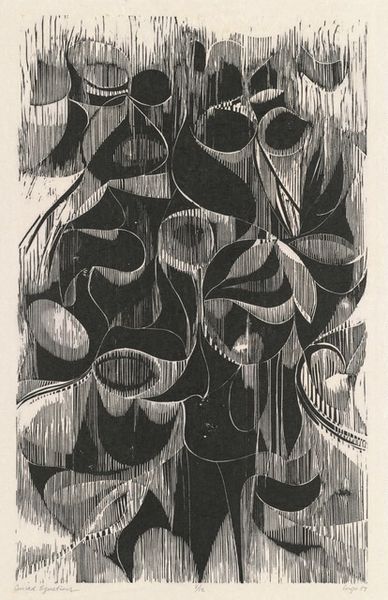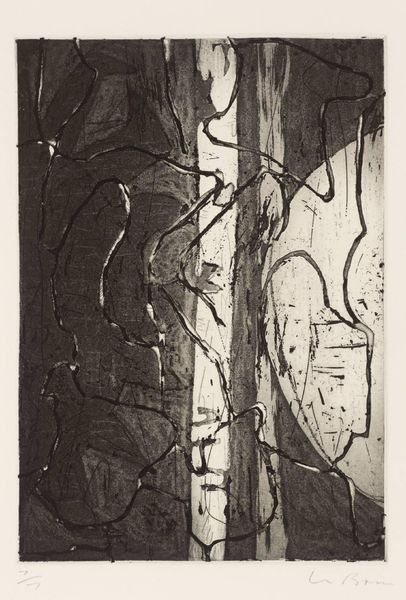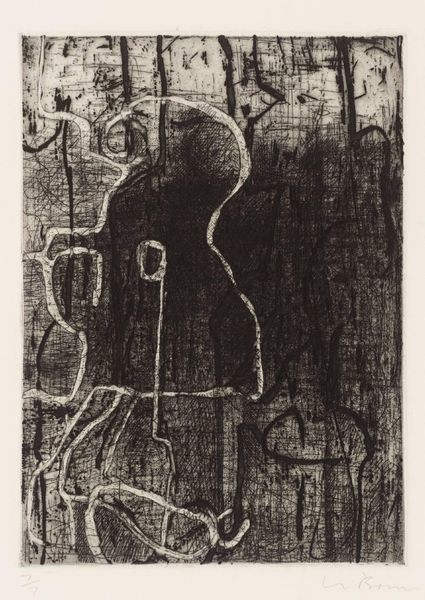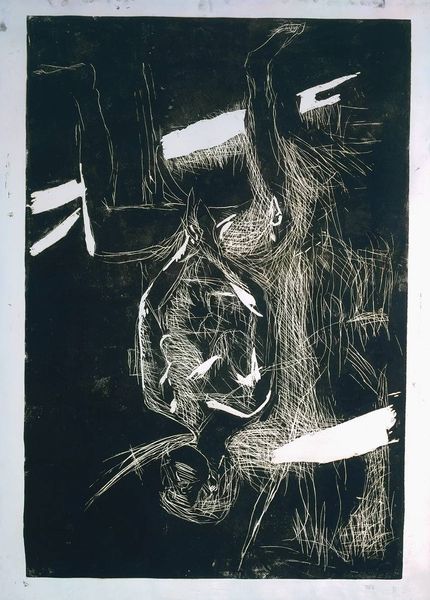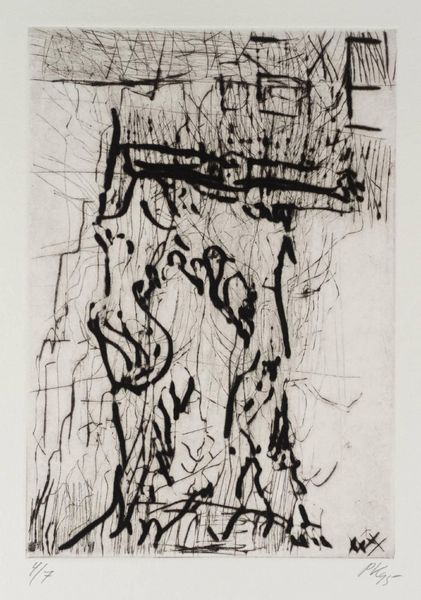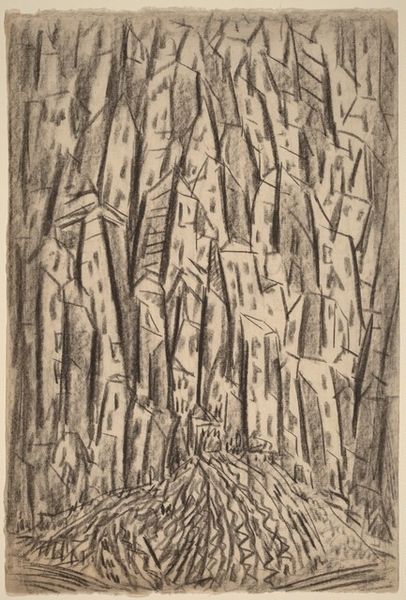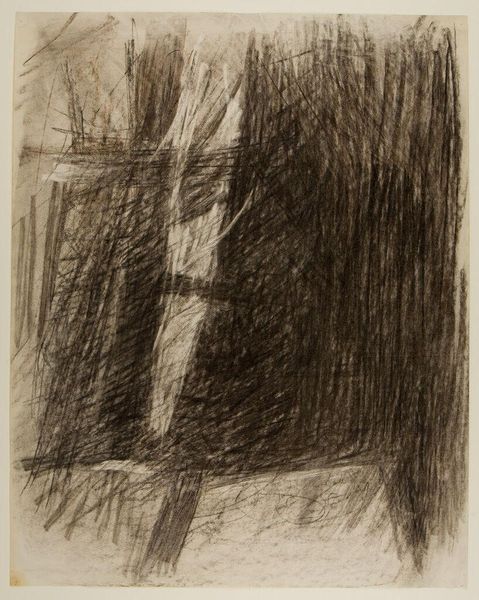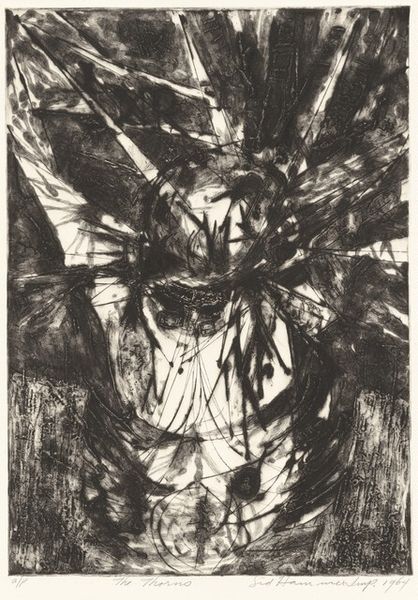
Dimensions: overall: 17 x 13.3 cm (6 11/16 x 5 1/4 in.)
Copyright: National Gallery of Art: CC0 1.0
Curator: This piece, dating circa 1932, is an Untitled drawing by Abraham Walkowitz, rendered in graphite. It immediately strikes me as a dense network. A sort of thicket, or perhaps even a cage, fashioned out of lines and shadows. What's your take? Editor: I see a confluence of fractured perspectives. The immediate effect is dynamic, a jostling of shapes and planes vying for attention. I'm especially drawn to the tonal variations in the graphite, creating depth within what could otherwise be a purely linear composition. Curator: Absolutely, that interplay is central to its Expressionist sensibility. Consider, in Expressionism, fractured forms externalize inner states, particularly disorientation in the face of modernity. The cage could represent constraint or confinement—a struggle to find solid form in chaos. Do you see further suggestions of meaning, Formalist? Editor: The tension resides in the oscillation between surface and depth, a flattened plane disrupted by those orbs punctuating the scene, breaking the flow. They operate almost as graphic weights grounding this otherwise vertiginous composition, inviting closer inspection. Their spherical shape feels at odds with all of the angled forms. Curator: Those orbs remind me of eyes—they imply something is watching us, or perhaps watching *through* this dense network. The very density of the line work creates a visual metaphor, then, for obfuscation or masking, inviting reflection on visibility, power, and maybe hidden intention. Is someone observed? Who is occluded? Editor: Yes, that veiled element resonates. Perhaps Walkowitz is investigating perception itself. Note how he employs line—not just to delineate shapes, but to build entire volumes through shading and varying stroke pressure. It moves beyond pure representation toward a meditation on process. Curator: A visual echo, then, of interior psychic processes struggling to represent themselves. The unresolved, chaotic surface might stand in for states of psychological distress made palpable to the viewer. Editor: Precisely. In prioritizing subjective feeling and the gestural mark over objective depiction, it reflects a profound engagement with the raw materiality of artmaking. Curator: It feels profoundly ahead of its time, somehow. Editor: I agree. It invites us to reconsider abstraction not merely as formal exercise but also as a mode of inquiry.
Comments
No comments
Be the first to comment and join the conversation on the ultimate creative platform.
